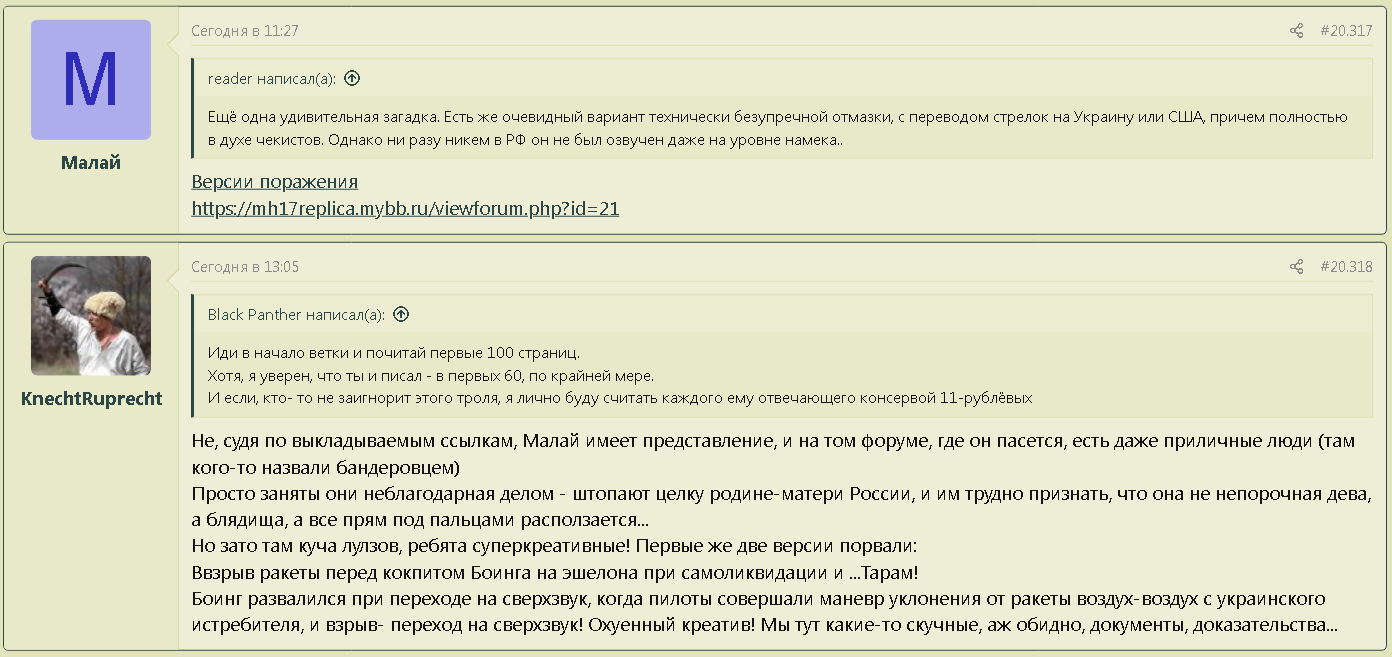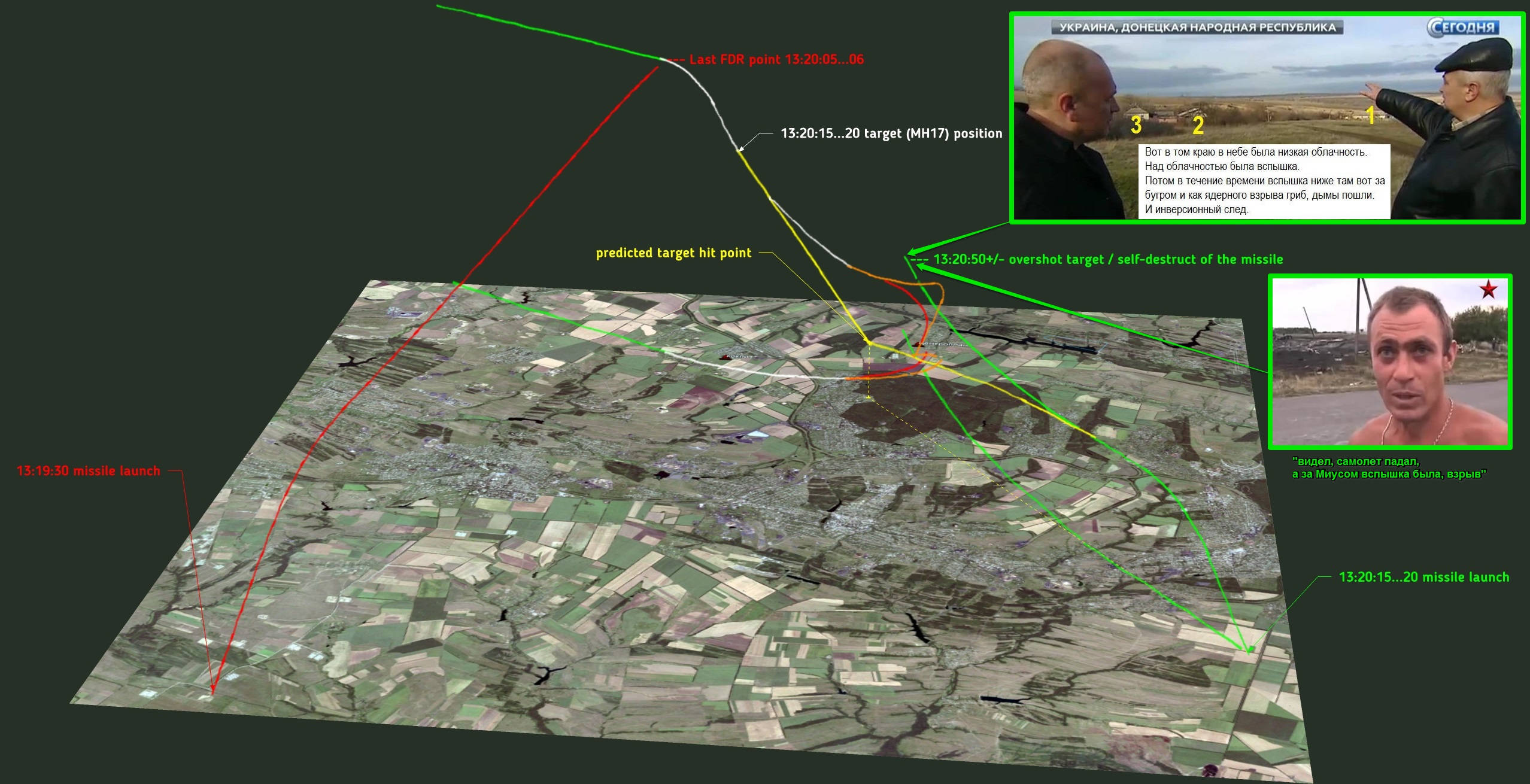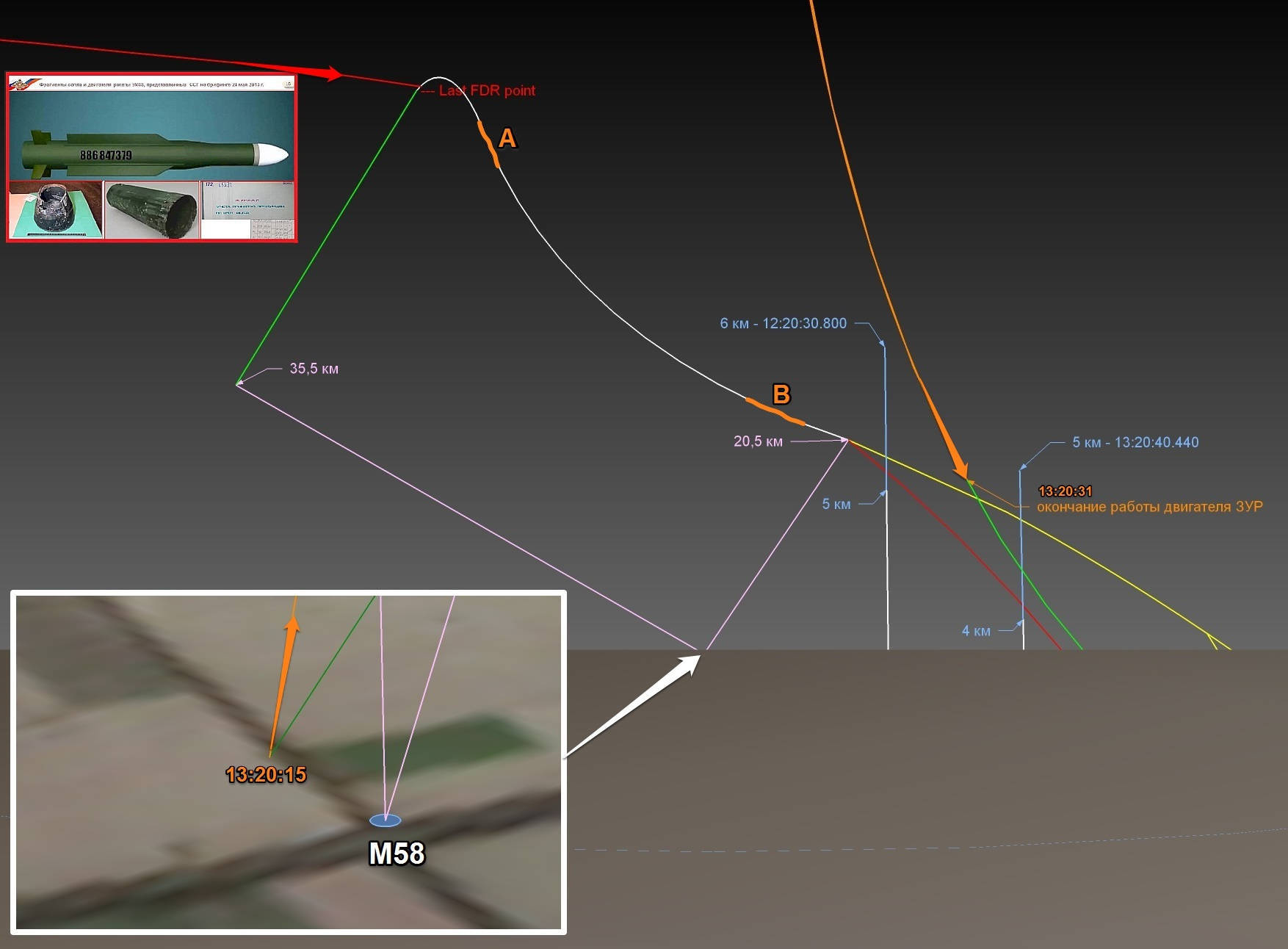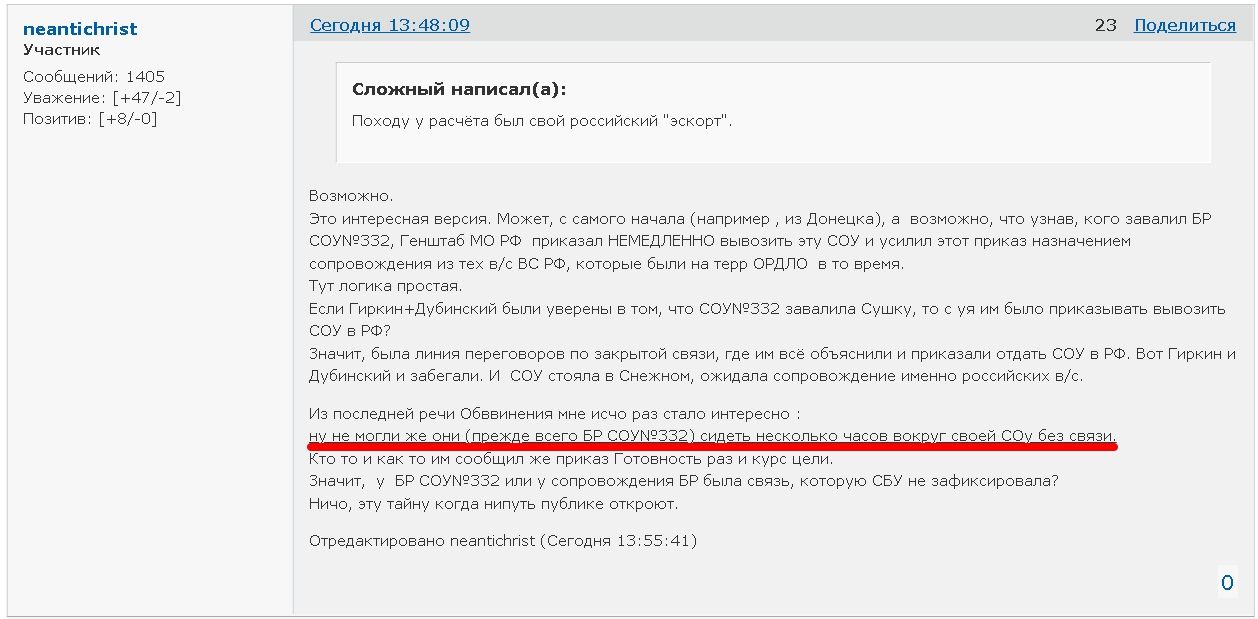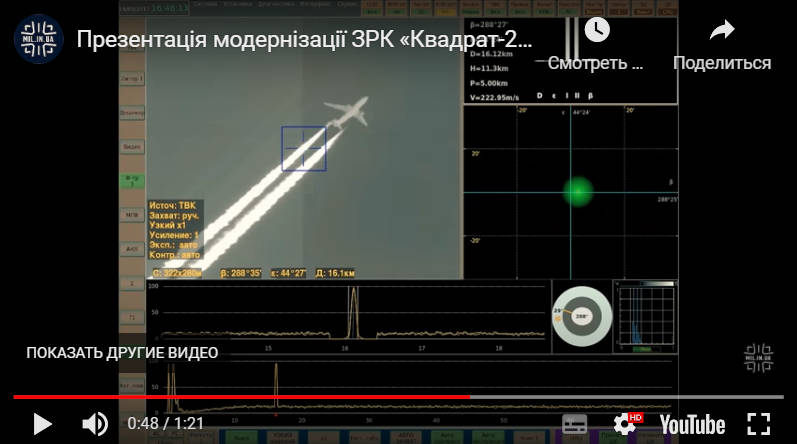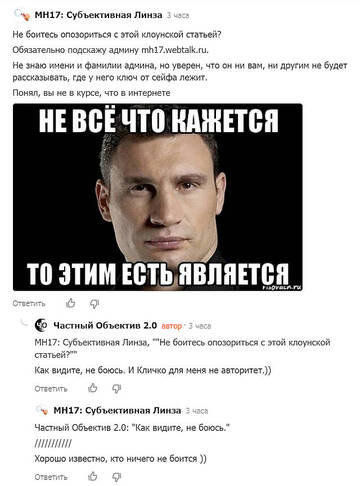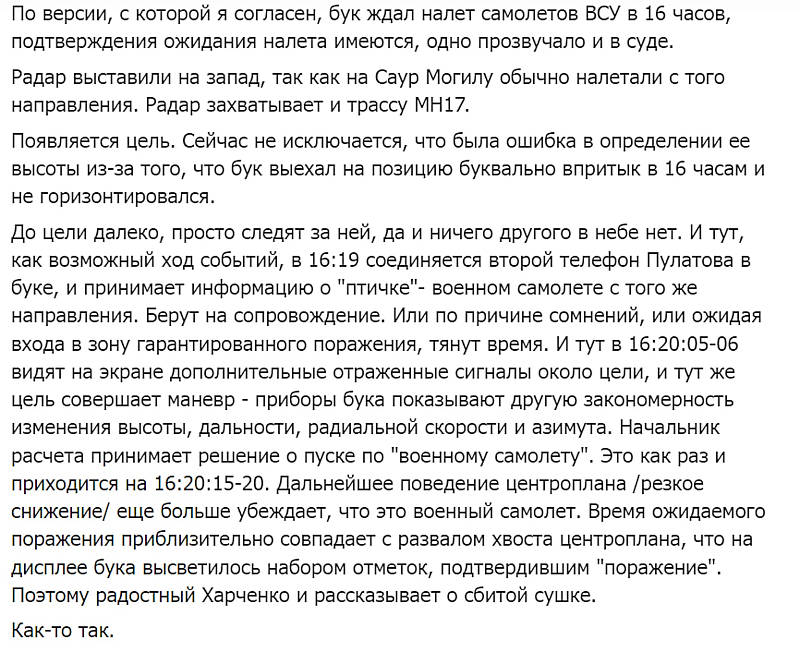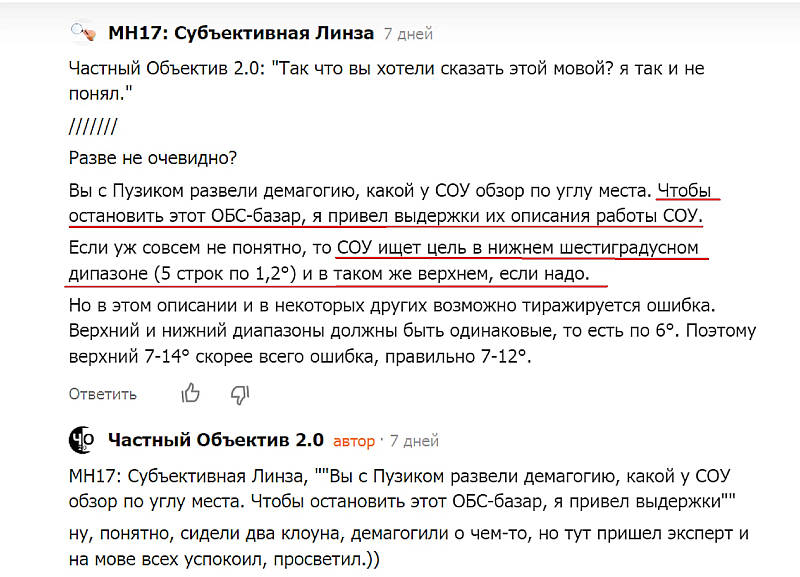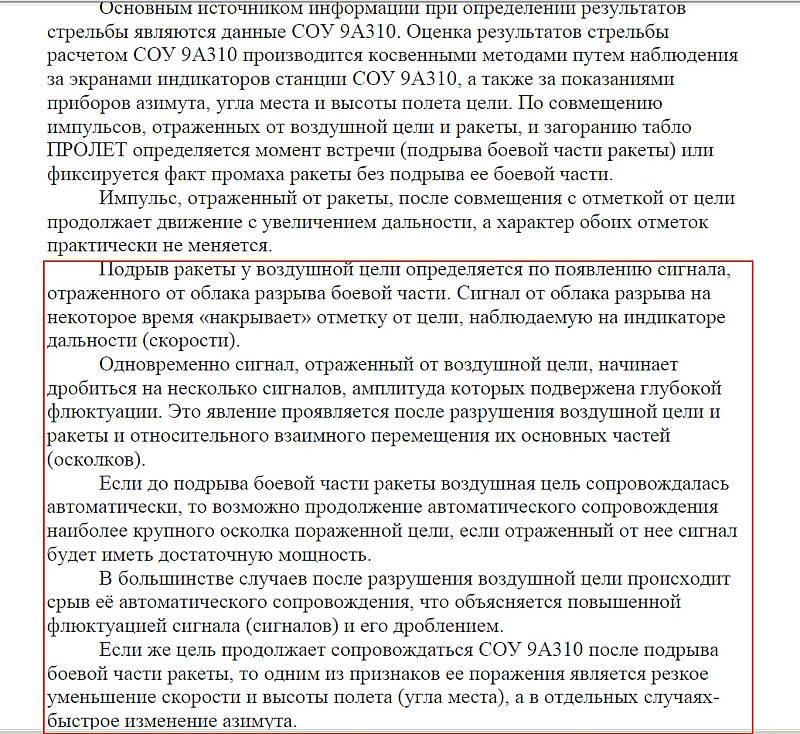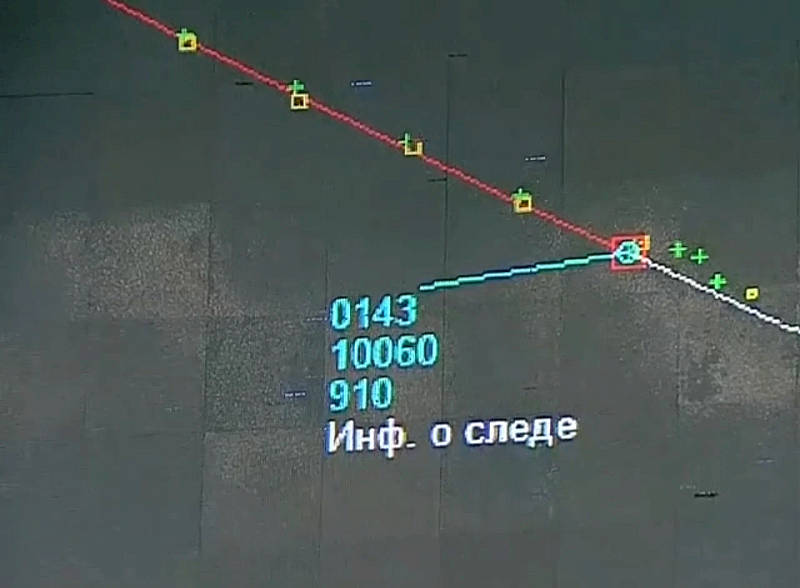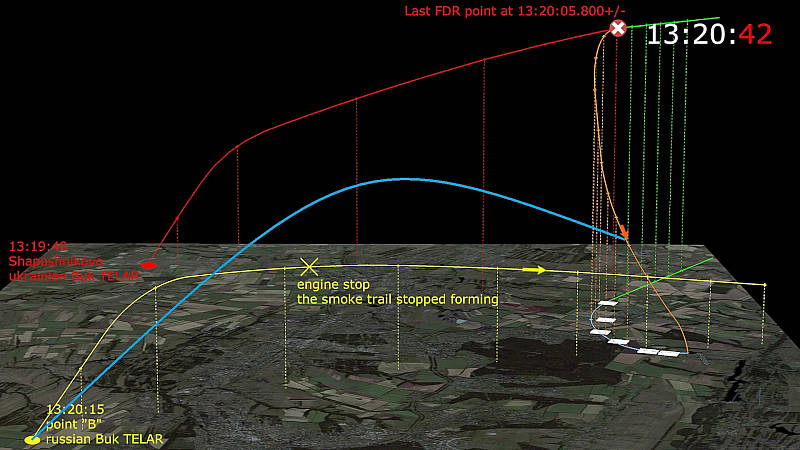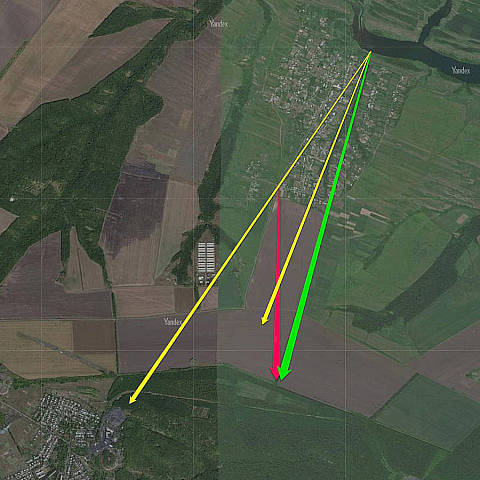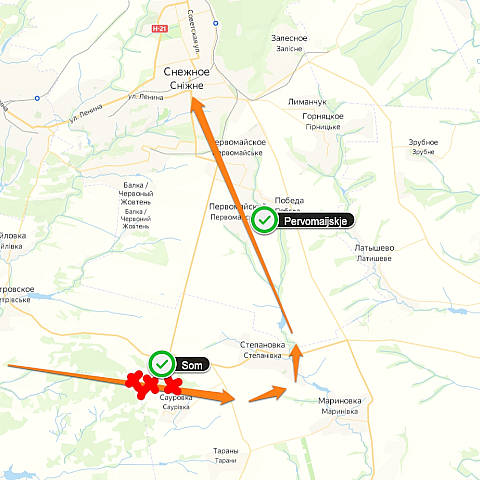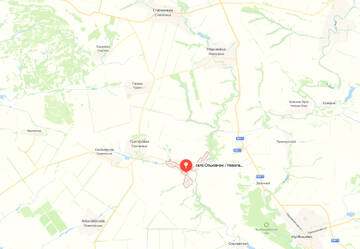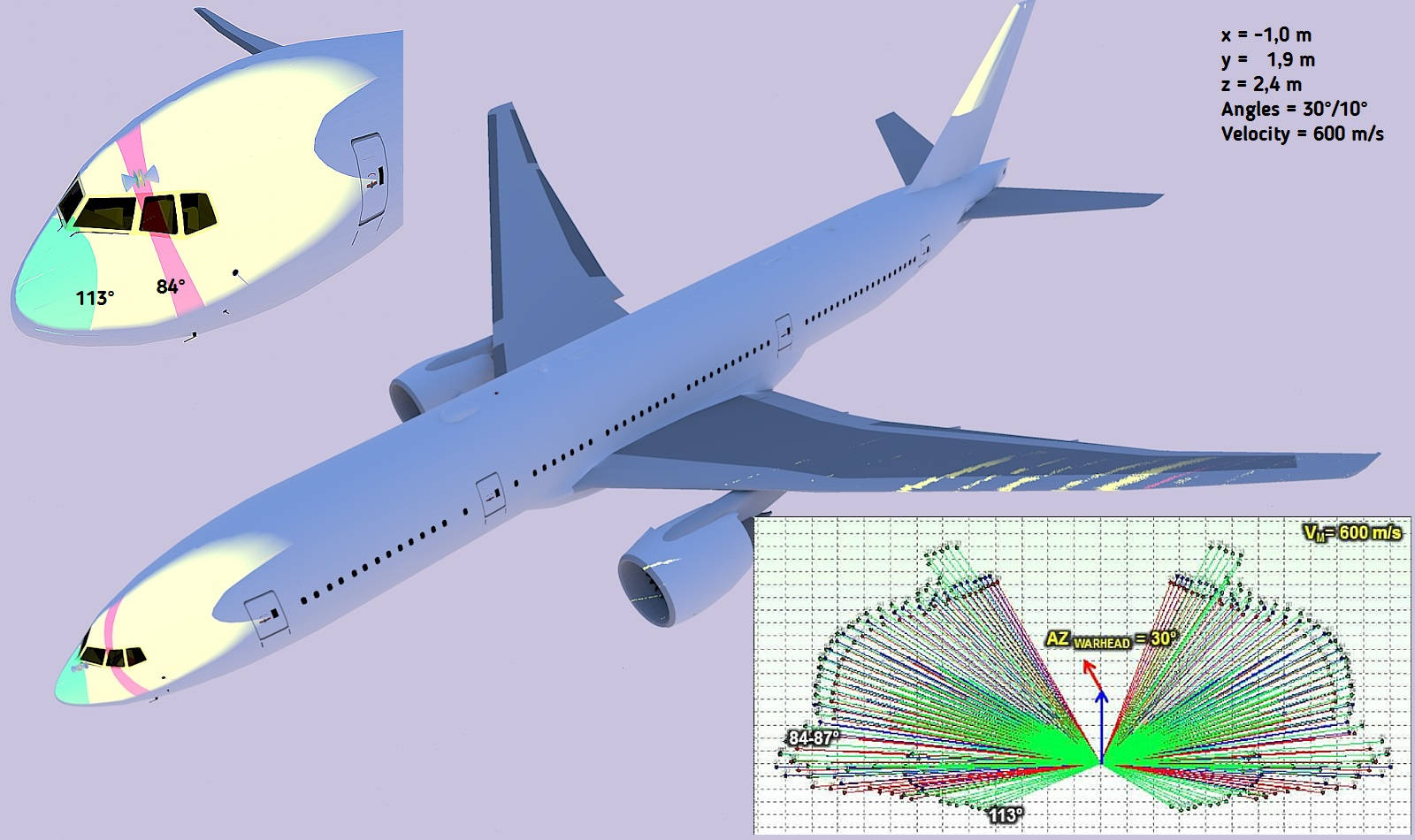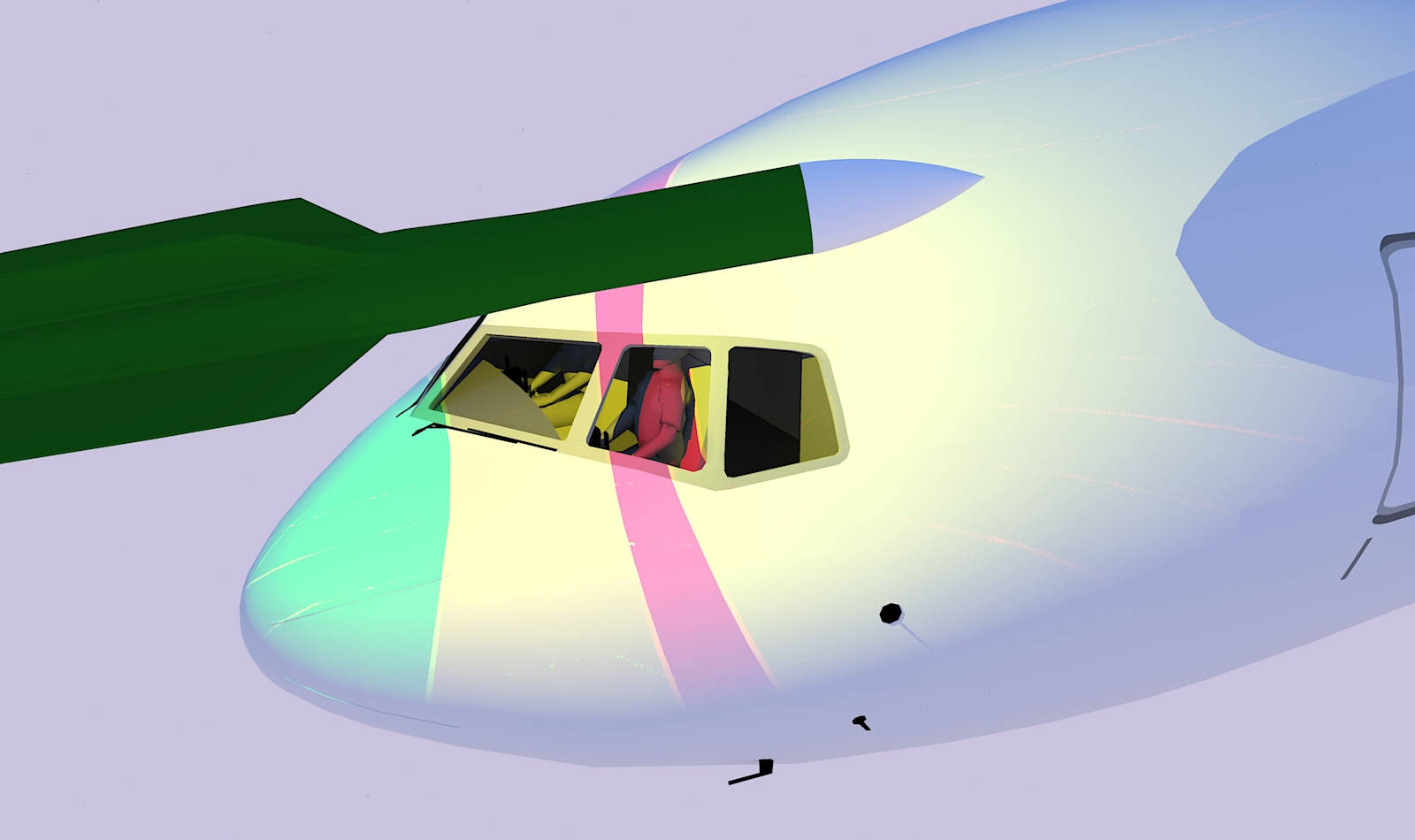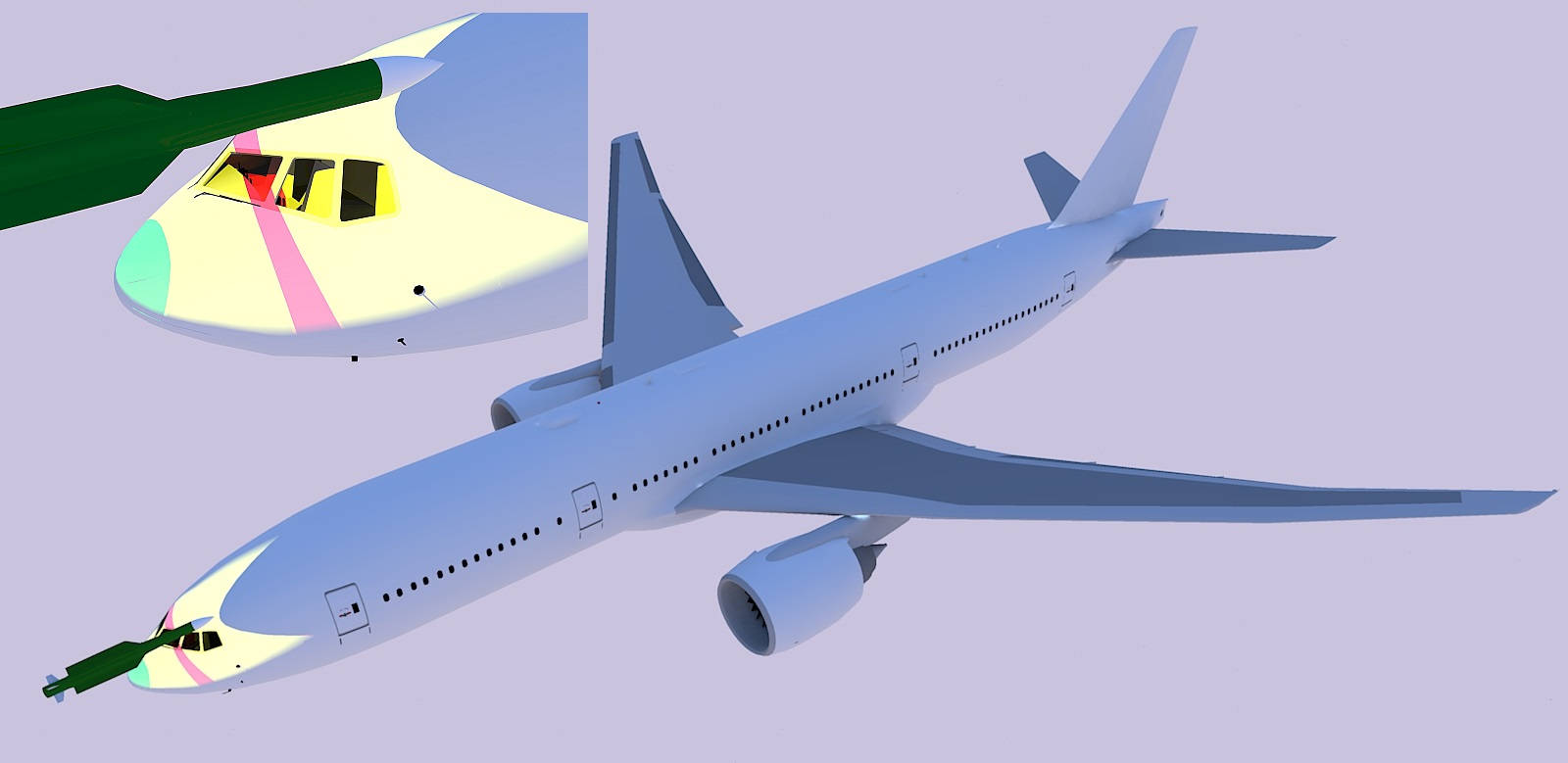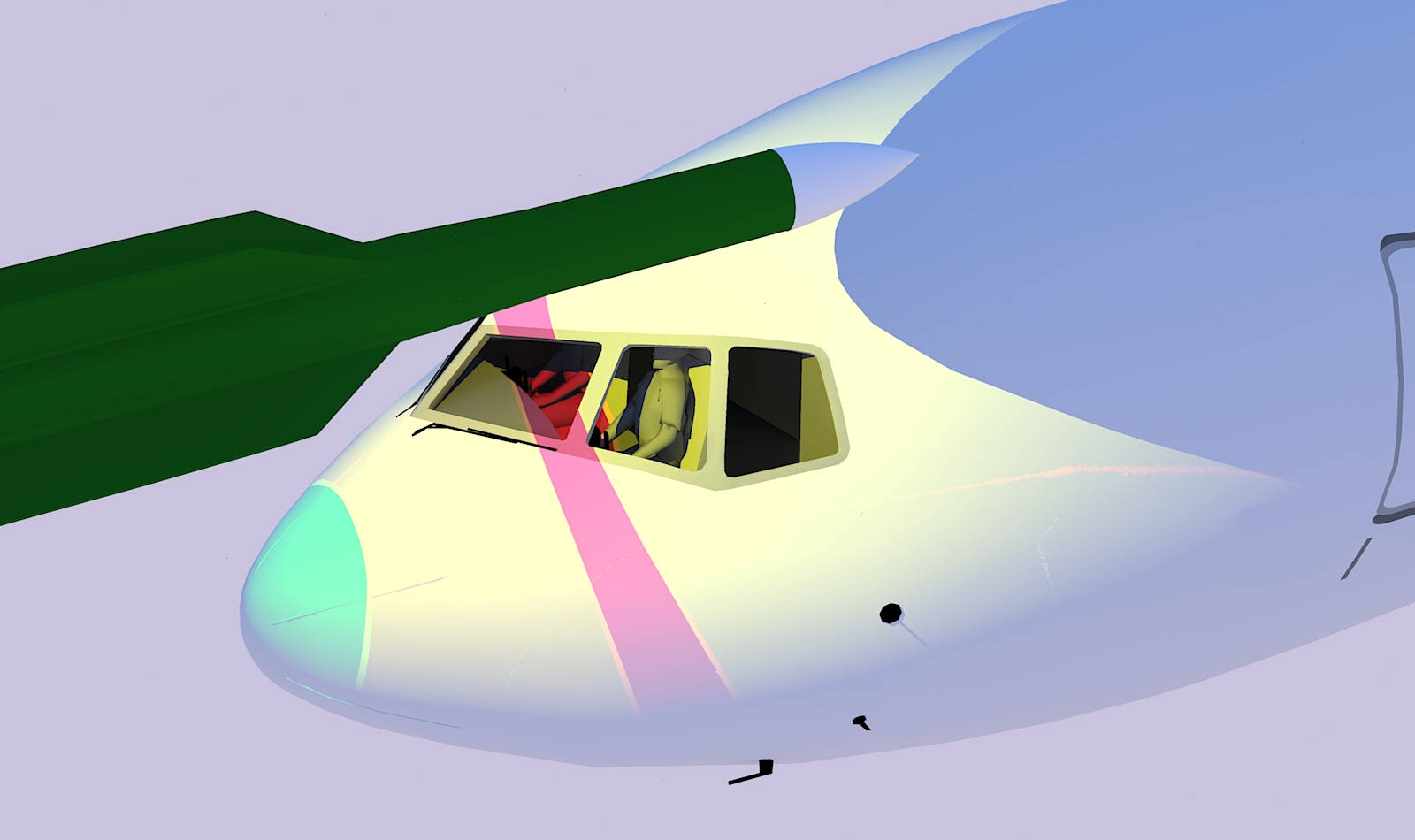A village woman walks along a sunflower field in a village in southeastern Ukraine where debris from MH17 fell. Photo by Dmitry Lovetsky/AP
inShare
Russian state media has given saturation coverage to the report by engineers from the Russian defense corporation Almaz-Antey which claims that while a Buk-M1 was used to shoot down MH17, it was launched not from the area near Torez but further south in Zaroshchenskoye, ostensibly under Ukrainian control at the time.
We debunked this claim last month by showing that this area was not under Ukrainian control, using not only the Ukrainian maps of the time but those of the Russian-backed separatists as well as calculations from Russian critics that show the missile could not have come from this area. There is also a good deal of evidence that the Buk came from Grabovo which we have assembled in our Evidence Review. Recently, the report published by Boris Nemtsov’s colleagues on the basis of his research before his death included a chapter with further information about the photographer who took the photos showing the launch, which have been geolocated, and satellite images confirm the location determined by Ukraine@War blogger @dajeypetros.
But under pressure of the international community’s conviction that Russian-backed separatists in the area were responsible, and as the official Dutch report issue looms (the Dutch Safety Board expects to issue it in October), Moscow seems to be putting out yet another hypothesis. Dutch Foreign Minister Burt Koenders visited Moscow recently to meet with Russian Foreign Minister Sergei Lavrov to discuss the report and his efforts to prosecute suspects in the downing of MH17.
Roughly 2/3rds of the victims were Dutch citizens. Dutch prosecutors have not named the suspects. Lavrov said Russia supported the UN Security Council that called for bringing the perpetrators to justice.
Novaya Gazeta published the leaked report of the Almaz-Antey engineers in May, but also published a debunking by Mark Solonin, an aircraft designer and independent historian who illustrated that the launch site had to be near Snezhnoye, not Zaroshchenskoye, based on the impacts.
Novaya Gazeta‘s special correspondent Pavel Kanygin followed up this hypothetical work with some on-the-ground reporting of some new eye-witnesses, both in the area where the launch was likely made, and in the area where the Russian engineers claim that it was. The Interpreter translates below:
Grabovo
Almost everybody in this village saw the MH17 disaster: the explosion, the pieces falling from the sky, the bodies which fell on the field and on the houses. I managed to videotape interviews with a family of local residents who observed the crash. Without particular discrepancies, they describe the moment when the airliner is already destroyed in the air, and “falls like a leaf from the sky.” Several people described how they heard a boom which preceded the crash of the plane.
Anatoly, age 17, a resident of Grabovo, told me how he saw how a “ball” flew at high speed from the southeast (from the direction of Snezhnoye), then hid behind a cloud, after which there was a boom.
Anatoly: My friends and I were swimming in the Mius (a river which flows through Grabovo-PK). We had already climbed out, and were drying ourselves out, when I heard the sound of a missile. We have already grown used to hearing that sound (there were battles near Grabovo in the summer of 2014–PK), but this sound was much louder, as if it were near us. I looked up at the sky, it was poorly visible, but then I saw a ball, it was just one ball, shining, like. It flew behind a cloud, it was average cloud cover, and [then] I heard an explosion. Then about 10-20 seconds later we looked — it wasn’t clear what it was — and it flew out, or to be more precise, it was already spiraling down, the plane. [From behind the clouds] it popped right out. People began to fall out [of the plane], and the shell ripped. Then it broke into three pieces. The explosion was so loud that people fell down [on the ground]…
Kanygin: That is, you did not see the plane itself before it flew out from behind the clouds?
Anatoly: (Shakes his head negatively–PK).
Kanygin: And this ball, can you show from which direction it came?
Anatoly: It came somewhere from there (points to the south-east–PK). I remember exactly, the ball flew from there, and the plane popped out from there somewhere.
Kanygin: Was it already in a tailspin?
Anatoly: Yes, it was already in a tailspin. It was spinning, and people were already starting to fall out of it. I thought it would fly at us, I wanted to drive into the Mius out of fear. But it fell, and we fell along with it. Then we picked ourselves up quickly, we went [to Grabovo] and there were people crying and shouting. There was a fire. People began to check if there was anyone alive. We went, and there was such carnage…
Kanygin: At what time approximately did you observe the flight of that ball?
Anatoly: I didn’t see it from the ground, when they launched it. I saw it when it was already flying. About five seconds. Then it went behind a cloud, and then two-three seconds, and then an explosion.
Zaroshchenskoye
The village of about 100 homesteads is located about 5 kilometers south of the highway connecting Donetsk and Rostov. In the center is a seminary building which was destroyed even before this war, dismantled down to the bricks in places. To the south there are the pavilions of a former collective farm. And further on there are fields and cows. There is a small elevation, recently plowed — this is the place from which, according to the conclusions of the Russian military specialists, the Buk-M1 missile was launched. The Russian military specialists claim that on July 17, the territory surrounding this village and this elevation were controlled by the Ukrainian Armed Forces (UAF). However, six local residents told me that they did not see the Ukrainian Army in the village during those days. According to them, on July 17, Zaroshchenskoye was under the control of the DNR, but the forces themselves did not come into the village as there were no battles here.
I recorded interviews with the locals on a tape recorder — the villagers didn’t object to this, although they categorically refused to go on camera. “You know where we live,” said one; another said “And if they come for us later?” and a third said “Young fellow, we don’t need your video. You roll it, but we have to live here.”
The elevated spot which the military experts claim could be used as a launch site is the farmland of the family of a woman who gave her first name and patronymic only, Natalya Viktorovna. Natalya Viktorovna’s son shares the elevation with other residents. Last year (just like this year), they planted this field.
“We went there every day, and the day after, and there was nothing there,” said Natalya Viktorovna.
“Neither the DNR or the nationalists were here in our village. Nobody was here in Zaroshchenskoye. We were by ourselves. And there was no Buk,” she said.
Kanygin: But did you see the tailspin in general?
Natalya: No one saw anything! We saw black smoke, just like every day, every other day. The gas station was on fire or the factory was on fire. But we didn’t hear that they fired anything from our area.”
Kanygin: Natalya Viktorovna, could you tell me the same for the camera, that there was nothing here in your village?
Natalya: No, I will not say anything, over there is Olga Ivanovna, Ivan Dorofeyevich, go [ask] them. Why do I need this? I don’t want them to recognize me on television — here I’m sitting on the hutch and saying: did I see it or not see it. And I say: there was nothing! Is that clear? I’m telling you 100%.
“We were here the whole time,” she added. “We have cows here, a farm, where would we run to.”
I met a milkmaid, Natalya Nikolayevna, with her girlfriends at the other end of the village. They were riding their bikes with pails from the pavilions of the old collective farm.
Natalya: You could see it, grandfather was mowing the grass — and first there was a loud boom, then the plane began to fall. My husband saw it. The plane began to fall and crashed.
Kanygin: They say that they shot at the Boeing from here, from your area.
Natalya: That’s stupid! My husband went around in the car, there should have been some traces left, he went all over, looked at everything, but there was no trace! Not even from a bicycle. How can they say that [they shot] from Zaroshchenskoye? There was nothing! It’s total nonsense, really.
Friend: We would have heard if someone fired, but we didn’t hear anything.
Friend: We heard it later only on the television!
Kanygin: Was the DNR army here in your area?
Friend: Yes, there was a checkpoint.
Kanygin: Was the Ukrainian army here?
Friend: Well, they passed by, on that road.
Friend: We all drove out, looked around. No traces! That’s all nonsense, that the Buk fired! We would have heard it, and we didn’t hear it.
Friend: Only when those grenades flew over did we hear it, but then nothing flew over!
Friend: And now you’ve heard that Zaroshchenskoye is famous throughout the whole world!
Before July 17, Ukrainian military transport planes had flown in the area around Snezhnoye near the Russian-Ukrainian border, and a fierce battle was being fought for control of the border. Two days before the MH17 downing, two buildings in Snezhnoye were damaged by air strikes, including the headquarters of the DNR. It was on July 15 that the Russian-backed separatists then announced that they could down Ukrainian jet fighters. On July 16, Igor Strelkov said that one had been down: “They report from Snezhnoye the downing of the second SU-25 by three shots from an MLRS. The anti-aircraft men from Oplot [battalion] were on the job.”
Then right after MH17 was down, Strelkov said again about “the continued birdfall”.
Natalya, a woman from the town of Pervomaika [Pervomaiskoye] who gave her first name only, recounted what she recalled:
Natalya: We were watching for the planes [of the Ukrainian Army]. We heard a loud boom. Very loud. Then literally soon after we learned that it was the plane [MH17]. But the problem was that they [the Ukrainian Army] had flown over us… Sushki [the nickname for SUs–The Interpreter] flew that day. They released some “shots.”
Kanygin: How high did they fly?
Natalya: Not every high. We saw them, we heard them.
Kanygin: They say that that a rocket was launched from here which hit the Boeing.
Natalya: I don’t know. I heard a boom, and that’s all, I don’t know anything more.
Kanygin: Where was the sound from?
Natalya: Somewhere nearby. But the boom was like something that had fallen or exploded. It was like that. But soon we learned [about the Boeing}.
Another woman named Marina who lives in Pervomaika [Pervomaiskoye] also recalled the plane:
Marina: Before that [the crash of the Boeing-PN), that day there were four people: Aunt Nina, Aunt Lyuba and my friend, Godmother Lyuda. We were sitting on the bench and talking. The drones were flying. Then we went our ways. And then Aunt Nina comes running out and starts calling us, and covered her face with her kerchief. And the missiles flew at us here, like fireworks, missiles, but they were white. There were a lot of them, they opened up, and then they hung in the sky, and she [Aunt Nina], thought that they were phosphorous bombs. Before that they scared us, that they had been in Makeyevka, that there would be burns later. [Aunt Nina] shouted – “phosphorous bombs!” And here Sergei came along [her husband, who served in the DNR–PK] and says “Aunt Nina, that can’t be, that’s the defense.”
Kanygin: Thermal [defense from an MRLS]?
Marina: Yes. And the sky was whitish, like fog.
Kanygin: Your neighbor told me that this plane which ejected thermal defense was then shot down.
Marina: Well, of course! It was shot down over Dmitrovskaya.
Kanygin: And that same day they downed the Boeing?
Marina: Yes, yes. Here, Uncle Seryozha knows [Marina nods to an old man who had driven up to us on a moped.] On that day. My husband was serving in Dmitrovka, and over there, they downed [that Ukrainian assault plane]. And then we cranked up the generator and learned from the television that a passenger plane had been downed.
Seryozha: There were four of them [flying then].
Kanygin: And one Ukrainian plane was destroyed?
Seryozha: Yes, yes. Honestly, yes. That Uke plane was downed by our guys. The self defense, yes.”
Seryozha: Perhaps, they wouldn’t have downed it [the Boeing]. The thing is, they [UAF attack planes] hid under it, under the [Malaysian] plane. Recently they hid behind passenger planes, and then blew them up — and then went to shoot [down]. I was working in the field on the combine, I saw it all. Yes… Four things were flying. They shot down one of them, and three over there.
Kanygin: What did they shoot them down with?
Seryozha: With an anti-aircraft weapon, I reckon. Our guys were already waiting for them.
Nikolai Ivanovich, a resident of Snezhnoye also gave an account.
Nikolai: I was walking along and I heard the roar of a plane. But it was as if the plane was flying alone. I began looking in that direction, but I didn’t see a plane, but I saw that…No! At first I heard a shot, but where it was made from — whether from the ground or another plane — I don’t know. And after that shot I saw how pieces of the plane were falling. I thought it was a military plane. Then it fell to the ground, there was an explosion, a cloud of smoke, and then that evening on the news I learned that a South Korean passenger plane was downed.
Kanygin: Do you mean a Malaysian? The South Korean plane was shot down 30 years ago.
Nikolai: Malaysian, I’m sorry. Yes, yes, yes.
Kanygin: Tell me, please, before that, were there cases when Ukrainian military planes were shot down?
Nikolai: Yes, there were.
Kanygin: At a high elevation?
Nikolai: There was a case in the center of town. Of course, I didn’t observe it. But it was over the central street of the city, as eye-witnesses recounted, a destroyer or a bomber flew by. The impacts were on two residential buildings, in one, 11 people were killed, and in another, it hit the foundation… Twice more I observed [how they were trying to shoot down], but the planes were not shot down. There were shots from the ground, most likely by the militia. With some sort of mortars, like a fan, they flew out before the plane, and the plane went off to the side.
Kanygin: Did you hear how those shells were launched from the ground?
Nikolai: Yes, and it was quite visible, too.
Kanygin: The shot that you heard on the day of the Boeing disaster, was it like the other shots from the ground?
Nikolai: Now that I can’t say. Everything happened suddenly. [After a pause.] What shot? I’m not an artillery man, I served in the aviation. I don’t know.
Nikolai Ivanovich faltered.
Kanygin: Then I had better turn off the camera.
I turned it off.
Nikolai: I never saw once how the Ukrainian planes attacked.
Nikolai Ivanovich continued confidently.
Kanygin: By the DNR fighters?
Nikolai: Well, sure. But that shot [at the Boeing] was from the ground or the air, I can’t tell you. But I didn’t see a second plane. Someone said there was one, but I didn’t see it.
Kanygin: Could you say the same thing on camera?
Nikolai: Will I be arrested tomorrow?
Kanygin: For what?
Nikolai: For the fact that I live on such a territory.


